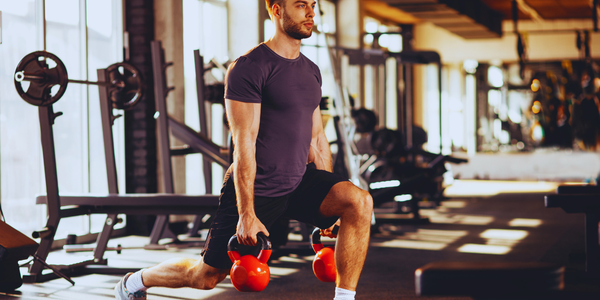Master These 5 Yoga Poses to Eliminate Lower Back Pain, Says Physical Therapist
Discover effective relief from back pain with these expert-approved yoga poses. A physical therapist shares proven Yoga for Back Pain techniques to strengthen and heal your spine.

https://www.youtube.com/watch?v=phuS5VLQy8c
Did you know 80% of adults will face back pain at some point? This fact shows a big health problem that affects many Americans every day. Yoga for back pain is a natural way to tackle this issue.
Back pain can really hold you back, affecting your work and daily life. Luckily, certain yoga poses can help with spinal and back pain. Physical therapists suggest these yoga practices to help manage chronic pain.
It's important to know why back pain happens. Sitting too much, bad posture, and muscle imbalances are big contributors. Yoga poses tackle these issues, offering quick relief and long-term benefits.
Key Takeaways
- 80% of adults experience back pain during their lifetime
- Yoga can reduce chronic pain by 30-50%
- Specific yoga poses target root causes of back discomfort
- Improved spinal flexibility and strength are key benefits
- Consistent practice can prevent future back pain
Understanding Back Pain and the Role of Yoga for Back Pain
Back pain is a big problem worldwide, hitting 70-90% of Americans at some point. It comes from sitting too much, bad posture, and muscle imbalances. These issues mess up our body's natural shape.
Why Back Pain Impacts Millions Worldwide
Back pain is a huge issue, affecting over 80% of people everywhere. It's a big challenge for those looking for lower back exercises that really help. Knowing what causes it is key to finding good ways to manage it.
- Sitting too much weakens muscles
- Bad work setups strain back muscles
- Not moving enough makes muscles stiff
How Yoga Addresses Back Discomfort
Yoga is a strong way to fight back pain through strengthening the core and being mindful. It targets specific muscles to balance and heal. Holding poses for 30-60 seconds strengthens and stretches muscles, easing tension.
| Yoga Benefit | Impact on Back Health |
|---|---|
| Improved Flexibility | Reduces muscle stiffness |
| Core Muscle Strengthening | Supports proper spinal alignment |
| Stress Reduction | Decreases muscle tension |
Physical Therapist's Perspective on Yoga Benefits
A study at the Cleveland Clinic showed yoga's power. People with chronic back pain saw their pain scores fall from 6 to 3 out of 10 after 12 weeks. Yoga not only eased pain but also improved function and sleep.
Experts say working with certified yoga teachers is key. They can adjust practices to keep them safe and effective for those with back pain.
Essential Preparations Before Starting Your Yoga Practice
Starting a yoga journey for pain management needs careful planning. Before you begin anti-inflammatory yoga, make sure you have a strong foundation for a safe and effective practice.
Talking to healthcare professionals is key, if you have chronic back pain. They can guide you on which yoga styles are best for your health needs.
- Schedule a medical consultation
- Discuss your current pain management goals
- Get clearance for specific yoga movements
- Understand your physical limitations
When getting ready for yoga, think about these important things:
| Item | Purpose | Recommendation |
|---|---|---|
| Yoga Mat | Provide cushioning and grip | Choose a non-slip, supportive mat |
| Comfortable Clothing | Allow free movement | Wear form-fitting, breathable attire |
| Props | Support modifications | Use blocks, straps, and bolsters |
Mindfulness is crucial in yoga. Breath work is important for pain management, helping to reduce inflammation and relax. Start slow, listen to your body, and move forward gradually.
Yoga is a personal journey. What works for one might not work for another. Be patient and focus on gentle, consistent practice.
Five Therapeutic Yoga Poses for Lower Back Relief
Yoga is a great way to ease lower back pain. Physical therapists suggest certain yoga poses to strengthen muscles and improve flexibility. Therapeutic yoga is a natural way to tackle back pain without surgery.
These yoga poses can change how you manage back pain. Let's look at five key poses that offer relief:
Cat-Cow Pose for Spinal Flexibility
This pose is a key part of easing back pain. Start on hands and knees, then move your spine in an arching and rounding motion. Do this for at least five repetitions each time. Focus on smooth movements.
Child's Pose for Gentle Stretching
This pose is calming and stretches the spine. It helps relax the nervous system and reduce back tension.
Downward Dog for Back Strengthening
Downward Dog is a classic pose with many benefits. It strengthens the back, improves posture, and stretches the hamstrings and back muscles. Hold for 20 seconds.
Bridge Pose for Posture Improvement
Bridge Pose is great for strengthening the lower back and improving posture. Lift your hips for 20-30 seconds. It strengthens the lower back and improves spinal alignment.
Pigeon Pose for Hip Opening
Pigeon Pose is a deep stretch for the lower back. Hold for 20-30 seconds on each side. It releases tension in the hips and lower back.
Experts say to do these poses 1-2 times a week, then increase to three times. Always listen to your body and see a doctor if back pain persists.
Conclusion
Adding yoga to your wellness routine is a smart move for back pain. Studies show yoga can really help, with big improvements in pain and function. It changes how you think about your body's health.
The stretching routines in this guide are more than just exercises. They're a way to tackle back pain naturally. With 25% of US adults dealing with low back pain, these yoga poses offer a helpful solution.
Being consistent is important for lasting benefits. Even if some poses are hard at first, sticking with it can make a big difference. Your body is special, so listen to it to create a yoga practice that works for you.
Start your journey to healing by adding these yoga techniques to your daily life. With commitment and mindful movement, you can build a stronger body that handles back pain better.
FAQ
Is yoga safe for people with chronic back pain?
Yoga can be safe and helpful for chronic back pain if done carefully. Always talk to a doctor before starting yoga. Start with easy poses that don't push your body too hard.
How often should I practice yoga for back pain relief?
Practice yoga 2-3 times a week. Begin with 15-20 minute sessions. As you get stronger, you can do longer sessions. Being regular is important for managing back pain.
Can yoga completely cure my lower back pain?
Yoga can't guarantee a cure, but it can help a lot. It works by strengthening muscles, improving posture, and increasing flexibility. It's best when used with medical advice and a full treatment plan.
What equipment do I need to start yoga for back pain?
You'll need a good yoga mat, comfy clothes, and maybe blocks or straps for help. A supportive mat is key for protecting your back during practice.
Are there any yoga poses I should avoid with back pain?
Stay away from deep twists, extreme bends, and poses that hurt. Be careful with forward bends and intense stretches. Always listen to your body and stop if it hurts too much.
How long will it take to see improvements in my back pain?
Results can vary, but many see relief in 4-6 weeks. Improvement depends on your condition, how often you practice, and how well you do the poses.
Can beginners with no yoga experience practice these back pain relief poses?
Yes, these poses are good for beginners. Start slow, use props, and focus on proper form and breathing. Don't worry too much about perfecting the pose.
Should I practice yoga if I'm currently experiencing acute back pain?
If you have sharp pain, rest and see a doctor. After the pain goes away and you get the okay, start with gentle yoga poses for back pain.
Source Links
- Namaste the Pain Away: 15 Yoga Poses for Back Pain
- Live Be Yoga: 5 Simple Poses to Relieve Back Pain
- Benefits of Stretches for Lower Back Pain Relief with Yoga
- 3 Ways Yoga Can Help With Back Pain | NJ Spine & Orthopedic
- Yoga for Back Pain
- Benefits of Yoga for Lower Back Pain
- New to Yoga? 12 Things to Know Before Taking Your First Class
- Chronic Back Pain Management with Yoga
- Yoga Poses for Lower Back Pain | National Spine Health Foundation
- 5 Therapeutic Yoga Poses for Health and Healing - Little Rock Soirée
- Five Yoga Poses to Fix or Prevent Lower Back Pain
- Yoga for chronic low back pain: A meta-analysis of randomized controlled trials
- Yoga as a treatment for chronic low back pain: A systematic review of the literature
👉 Join the Active Man Community
Get expert tips, workout guides, nutrition hacks, and the latest trends delivered straight to your inbox every week. No spam — just actionable insights to help you live stronger, healthier, and better.





